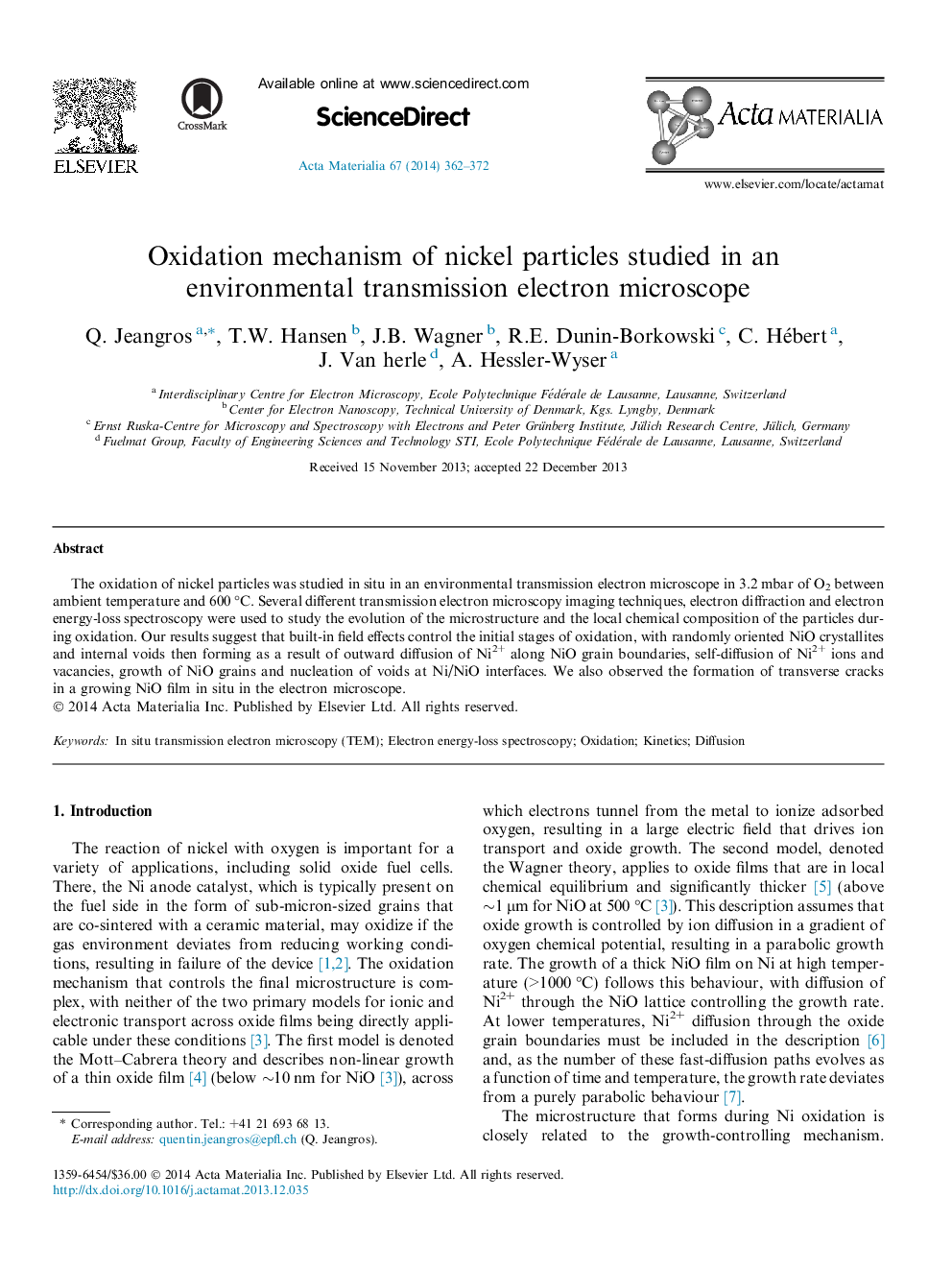| Article ID | Journal | Published Year | Pages | File Type |
|---|---|---|---|---|
| 7882653 | Acta Materialia | 2014 | 11 Pages |
Abstract
The oxidation of nickel particles was studied in situ in an environmental transmission electron microscope in 3.2 mbar of O2 between ambient temperature and 600 °C. Several different transmission electron microscopy imaging techniques, electron diffraction and electron energy-loss spectroscopy were used to study the evolution of the microstructure and the local chemical composition of the particles during oxidation. Our results suggest that built-in field effects control the initial stages of oxidation, with randomly oriented NiO crystallites and internal voids then forming as a result of outward diffusion of Ni2+ along NiO grain boundaries, self-diffusion of Ni2+ ions and vacancies, growth of NiO grains and nucleation of voids at Ni/NiO interfaces. We also observed the formation of transverse cracks in a growing NiO film in situ in the electron microscope.
Keywords
Related Topics
Physical Sciences and Engineering
Materials Science
Ceramics and Composites
Authors
Q. Jeangros, T.W. Hansen, J.B. Wagner, R.E. Dunin-Borkowski, C. Hébert, J. Van herle, A. Hessler-Wyser,
